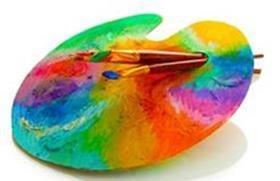
Popular topics

10 tips for designing a basic flow cytometry panel
08 May, 2015

These ten tips are designed to help you design your first basic multicolor flow cytometry panel
- Familiarize yourself with your flow cytometer. Most new cytometers will have three lasers or more (lasers: violet, blue and red). Yellow lasers are rare and are mainly used for the detection of fluorescent proteins, such as GFP, in bacteria or yeast.
- Once you know your flow cytometer set-up determine your specific configuration (e.g. what detectors are included in the cytometer). Together with the lasers these provide information on which and how many colors can be simultaneously detected (for a new cytometer this would be five or more).
- Choose the brightest possible fluorochromes. In order to evaluate a fluorochrome’s brightness, staining index tables should be consulted. The higher the staining index number the brighter the fluorochrome. Of all the fluorochromes available on the market PE is by far the brightest.
- If the emission spectra of two fluorochromes overlap, spillover of one fluorochrome into the detection channel of the other fluorochrome might be observed. This makes it difficult or sometimes impossible to observe discrete cell populations. When selecting fluorochromes the emission and excitation spectra should therefore be checked for spectral overlap with the help of a spectrum viewer. Ideally, there should be no overlap between the fluorochromes. However, to some extent spillover can be corrected through a technique known as compensation. PE and FITC when used in the same panel are two fluorochromes, which need to be compensated.
- After having selected the fluorochromes for your experiment you have to decide what antigen to detect with which fluorochrome. The brightest fluorochrome should be reserved for the detection of the antigen with the least abundant expression level. The dimmest fluorochrome should be used for detecting the most abundant antigen.
- When designing panels of ≥eight colors, tandem dyes, such as APC-Cy™7, have to be included. This is due to both laser excitation and single fluorochrome limitations, which make it necessary for a single laser to excite the maximum number of flurochromes possible.
- Due to the presence of biotin within cells biotin conjugates should be avoided for staining intracellular antigens. If biotin has to be used, endogenous biotin has to be blocked with unconjugated streptavidin prior to addition of the biotinylated antibody.
- Many cell types (e.g. B cells, NK cells and macrophages) have FcR receptors on their surface to which the Fc region of antibodies binds non-specifically. This binding will result in an artificial positive staining result, which can be avoided by blocking of the receptors with FcR blocking reagents.
- Include appropriate controls in your flow panel. For surface stainings, isotype controls are still considered a must in order generate publication quality data.
- Apart from isotype controls, unstained cells should always be included in the experimental set-up to monitor autofluorescence. Additionally, for all multi-color flow cytometry experiments it is advisable to include compensation controls and Fluorescence Minus One (FMO) controls , which assist with identifying gating boundaries.
You may also be interested in...

View more Applications or Flow Cytometry blogs
















